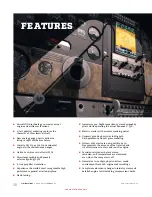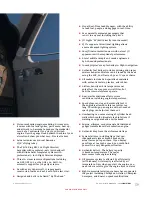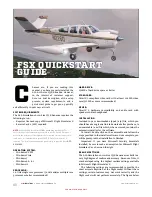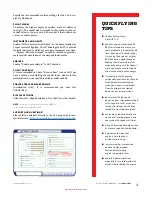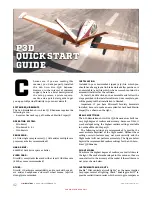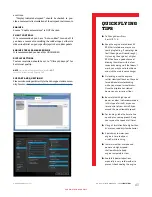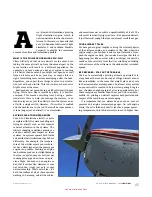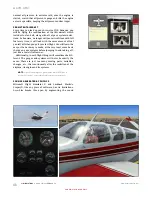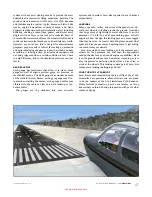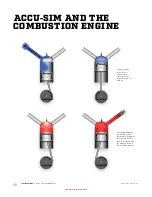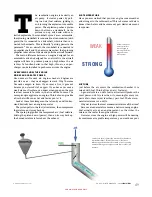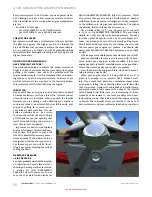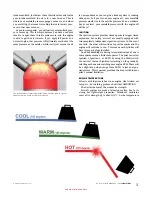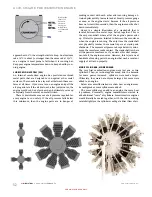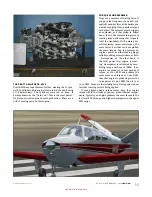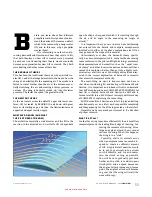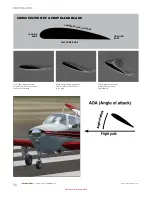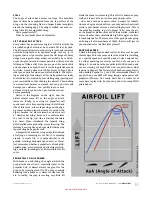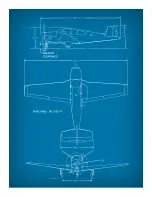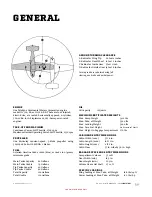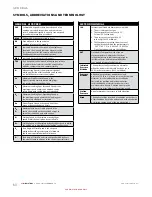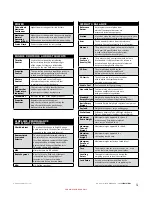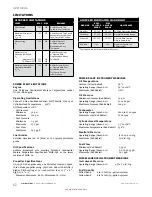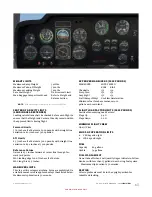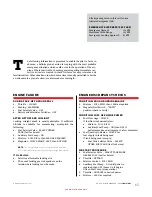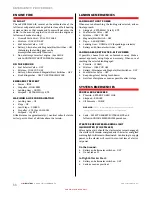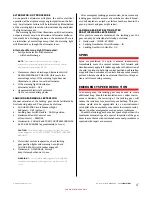
52
A2A
SIMULATIONS :::
ACCU-SIM V35B BONANZA
ACCU-SIM AND THE COMBUSTION ENGINE
FOR SIMULATION USE ONLY
Without the
layer of oil
between
the parts,
an engine
will quickly
overheat and
seize.
approaches 200°C, the strength starts to drop. An aluminum
rod at 0°C is about 5× stronger than the same rod at 250°C,
so an engine is most prone to fail when it is running hot.
Keep your engine temperatures down to keep a healthy run-
ning engine.
LUBRICATION SYSTEM (OIL)
An internal combustion engine has precision machined
metal parts that are designed to run against other metal
surfaces. There needs to be a layer of oil between those sur-
faces at all times. If you were to run an engine and pull the
oil plug and let all the oil drain out, after just minutes, the
engine would run hot, slow down, and ultimately seize up
completely from the metal on metal friction.
There is a minimum amount of oil pressure required for
every engine to run safely. If the oil pressure falls below
this minimum, then the engine parts are in danger of
making contact with each other and incurring damage. A
trained pilot quickly learns to look at his oil pressure gauge
as soon as the engine starts, because if the oil pressure
does not rise within seconds, then the engine must be shut
down immediately.
Above is a simple illustration of a crankshaft that is
located between two metal caps, bolted together. This is
the very crankshaft where all of the engine’s power ends
up. Vital oil is pressure-injected in between these surfaces
when the engine is running. The only time the crankshaft
ever physically touches these metal caps is at startup and
shutdown. The moment oil pressure drops below its mini-
mum, these surfaces make contact. The crankshaft is where
all the power comes from, so if you starve this vital compo-
nent of oil, the engine can seize. However, this is just one of
hundreds of moving parts in an engine that need a constant
supply of oil to run properly.
MORE CYLINDERS, MORE POWER
The very first combustion engines were just one or two
cylinders. Then, as technology advanced, and the demand
for more power increased, cylinders were made larger.
Ultimately, they were not only made larger, but more were
added to an engine.
Below are some illustrations to show how an engine may
be configured as more cylinders are added.
The more cylinders you add to an engine, the more heat
it produces. Eventually, engine manufacturers started to
add additional “rows” of cylinders. Sometimes two engines
would literally be mated together, with the 2nd row being
rotated slightly so the cylinders could get a direct flow of air.
Summary of Contents for BONANZA ACCU-SIM V35B
Page 1: ...A2ASIMULATIONS BONANZA ACCU SIM V35B BONANZA ...
Page 3: ...A2ASIMULATIONS BONANZA ACCU SIM V35B BONANZA ...
Page 5: ...www a2asimulations com ACCU SIM V35B BONANZA A2ASIMULATIONS 5 FOR SIMULATION USE ONLY ...
Page 27: ...www a2asimulations com ACCU SIM V35B BONANZA A2ASIMULATIONS 27 FOR SIMULATION USE ONLY ...
Page 58: ......
Page 68: ...68 A2ASIMULATIONS ACCU SIM V35B BONANZA www a2asimulations com FOR SIMULATION USE ONLY ...
Page 112: ......

